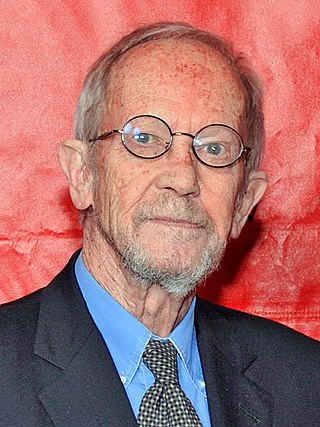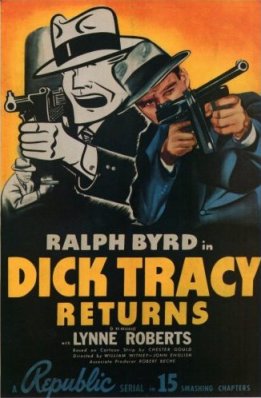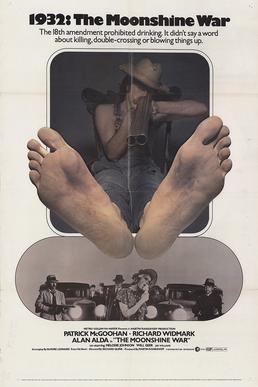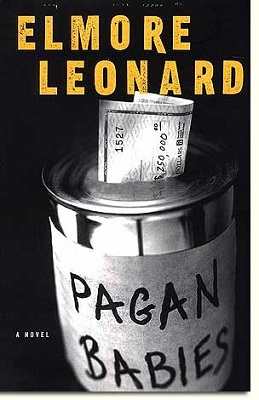
Elmore John Leonard Jr. was an American novelist, short story writer, and screenwriter. His earliest novels, published in the 1950s, were Westerns, but he went on to specialize in crime fiction and suspense thrillers, many of which have been adapted into motion pictures. Among his best-known works are Hombre, Swag, City Primeval, LaBrava, Glitz, Freaky Deaky, Get Shorty, Rum Punch, Out of Sight and Tishomingo Blues.
William Xavier Kienzle was an American priest and later writer.

Mr. Majestyk is a 1974 American action film directed by Richard Fleischer and written by Elmore Leonard. Charles Bronson stars as the title character, a melon farmer and Vietnam War veteran who comes into conflict with gangsters. Leonard, who wrote the film with an original screenplay, took the name Majestyk from a character in his 1969 crime novel The Big Bounce. He would also write the novelization of the film.

The Hot Kid is a 2005 novel by Elmore Leonard.

The Big Bounce is a crime novel written by Elmore Leonard, published in 1969.

The 39 Steps is a 1935 British spy thriller film directed by Alfred Hitchcock, starring Robert Donat and Madeleine Carroll. It is loosely based on the 1915 novel The Thirty-Nine Steps by John Buchan. It concerns a Canadian civilian in London, Richard Hannay, who becomes caught up in preventing an organisation of spies called "The 39 Steps" from stealing British military secrets. Mistakenly accused of the murder of a counter-espionage agent, Hannay goes on the run to Scotland and becomes tangled up with an attractive woman, Pamela, while hoping to stop the spy ring and clear his name.
Philip MacDonald was a British-born writer of fiction and screenplays, best known for thrillers.

John Joseph Francis Mulhall was an American film actor beginning in the silent film era who successfully transitioned to sound films, appearing in over 430 films in a career spanning 50 years.

Dick Tracy Returns (1938) is a Republic Movie serial based on the Dick Tracy comic strip. It was the eleventh of the sixty-six serials Republic produced and a sequel to the 1937 serial Dick Tracy, with Ralph Byrd reprising his role as the title character. It was successful enough that two further sequels were released in 1939 and 1941, and Byrd become so connected with the character he went on to play him in a subsequent television series.

The Moonshine War is a 1970 American crime comedy-drama film directed by Richard Quine, based on the 1969 novel of the same name by Elmore Leonard. It stars Patrick McGoohan, Richard Widmark, Alan Alda, and Will Geer.

Pagan Babies is a 2000 crime novel written by Elmore Leonard. He first used Pagan Babies as the name of a rock band in his 1981 novel Split Images.

The Lodger is a novel by English author Marie Adelaide Belloc Lowndes. The short story was first published in the January, 1911 edition of McClure's Magazine, in 1911. Belloc Lowndes wrote a longer version of the story, which was published as a series in the Daily Telegraph in 1913 with the same name. Later that year, the novel was published in its entirety by Methuen Publishing.

The Big Bounce is a 1969 American drama film directed by Alex March, based on the 1969 novel of the same name by Elmore Leonard and starring Ryan O'Neal in his film debut, Van Heflin, and Leigh Taylor-Young in what was the first of several films based on Leonard's crime novels. Taylor-Young was nominated for a Laurel Award for her performance in the film. The film was shot on location in Monterey and Carmel, California.
The Tangerine Bear is a 48-minute animated film for children released on November 11, 2000. direct-to-video It was directed by Bert Ring, and is based on the 1997 book of the same name by Betty Paraskevas and Michael Paraskevas. The voice cast includes famous celebrities Tom Bosley, Jenna Elfman, Howie Mandel, David Hyde Pierce, Jonathan Taylor Thomas, Ralph Manza, and Marlon Wayans. The story is narrated and sung by country/western singer Trisha Yearwood. It was produced by Family Home Entertainment and Hyperion Pictures, and distributed by Artisan Entertainment. Entertainment Rights held distribution rights to the film outside the United States.
Raylan Givens is a fictional character created by American novelist and screenwriter Elmore Leonard.

Split Images is a 1981 crime novel written by Elmore Leonard.
Peter Leonard, the son of author Elmore Leonard, is an American author of crime novels.

Life of Crime is a 2013 American black comedy crime film written and directed by Daniel Schechter, based on Elmore Leonard's novel The Switch (1978), which includes characters later revisited in his novel Rum Punch (1992), which was adapted into the Quentin Tarantino film Jackie Brown (1997). Life of Crime was screened on the closing night 2013 Toronto International Film Festival, on the opening day of the Abu Dhabi Film Festival, at the 2014 Traverse City Film Festival and released in theaters on August 29, 2014 by Lionsgate and Roadside Attractions.
Desperado is a series of five Western television films starring Alex McArthur as the honest cowboy, Duell McCall, beginning with the 1987 installment also titled Desperado and directed by Virgil W. Vogel.













